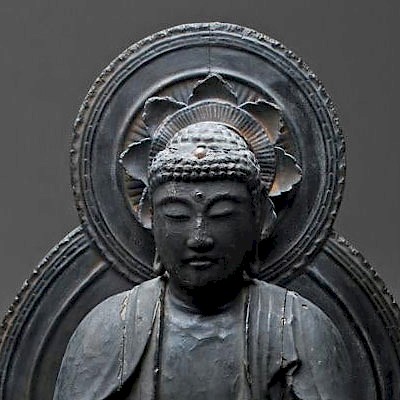Tall Greek Archaic Alabaster Alabastron
Lot 28
About Seller
Artemis Fine Arts
686 S Taylor Ave, Ste 106
Louisville, CO 80027
United States
Selling antiquities, ancient and ethnographic art online since 1993, Artemis Gallery specializes in Classical Antiquities (Egyptian, Greek, Roman, Near Eastern), Asian, Pre-Columbian, African / Tribal / Oceanographic art. Our extensive inventory includes pottery, stone, metal, wood, glass and textil...Read more
Categories
Estimate:
$1,300 - $1,950
Absentee vs Live bid
Two ways to bid:
- Leave a max absentee bid and the platform will bid on your behalf up to your maximum bid during the live auction.
- Bid live during the auction and your bids will be submitted real-time to the auctioneer.
Bid Increments
| Price | Bid Increment |
|---|---|
| $0 | $25 |
| $300 | $50 |
| $1,000 | $100 |
| $2,000 | $250 |
| $5,000 | $500 |
| $10,000 | $1,000 |
| $20,000 | $2,500 |
| $50,000 | $5,000 |
| $100,000 | $10,000 |
| $200,000 | $20,000 |
About Auction
By Artemis Fine Arts
Jan 7, 2020
Set Reminder
2020-01-07 10:00:00
2020-01-07 10:00:00
America/New_York
Bidsquare
Bidsquare : VARIETY AUCTION - Antiquities / Ethnographic
https://www.bidsquare.com/auctions/artemis-gallery/variety-auction---antiquities-ethnographic-4787
Around the world & back in time - be amazed at the treasures you will find. Antiquities from Egypt, Greece, Italy and the Near East, Asian, Pre-Columbian, African / Tribal / Oceanic, Native American, Spanish Colonial, Russian Icons, Fine Art, much more! Artemis Fine Arts info@artemisfinearts.com
Around the world & back in time - be amazed at the treasures you will find. Antiquities from Egypt, Greece, Italy and the Near East, Asian, Pre-Columbian, African / Tribal / Oceanic, Native American, Spanish Colonial, Russian Icons, Fine Art, much more! Artemis Fine Arts info@artemisfinearts.com
- Lot Description
**Originally Listed At $650**
Ancient Greece, Archaic Period, ca. 6th century BCE. A finely carved alabastron with a bulging base, a thick cylindrical body with a tapered neck, and a discoid rim surrounding a drilled-out interior cavity. The shoulder bears a pair of ovoid lug handles, each with five shallow grooves for increased gripping capability. Alabastra are long-bodied vessels with flat disks for the mouth. The shape was common in Corinth, and came to Athens in the 6th century BCE - this is an early example. The term "alabastron" is Greek with Egyptian origins, and many of the oldest examples are painted white, perhaps in imitation of the stone. This example displays the natural color of alabaster, and traces of original orange-yellow, white, and red pigment suggest this was at one time painted with vivid pigmentation. A fabulous example of early Greek lapidary techniques! Size: 2.5" W x 8.6" H (6.4 cm x 21.8 cm); 8.8" H (22.4 cm) on included custom stand.
Provenance: The Dere Family Collection, New York, USA, assembled 1970's-2000's; ex-Neil Phillips Collection, New York, USA, acquired in 1980s
All items legal to buy/sell under U.S. Statute covering cultural patrimony Code 2600, CHAPTER 14, and are guaranteed to be as described or your money back.
A Certificate of Authenticity will accompany all winning bids.
We ship worldwide and handle all shipping in-house for your convenience.
#148377Small chips to rim, body, lug handles, and base, with fading to much original pigmentation, and light encrustations. Nice earthen deposits and traces of original pigmentation throughout.Condition
- Shipping Info
-
All shipping is handled in-house for your convenience. Your invoice from Artemis Gallery will include shipping calculation instructions. If in doubt, please inquire BEFORE bidding for estimated shipping costs for individual items.
-
- Buyer's Premium



 EUR
EUR CAD
CAD AUD
AUD GBP
GBP MXN
MXN HKD
HKD CNY
CNY MYR
MYR SEK
SEK SGD
SGD CHF
CHF THB
THB















